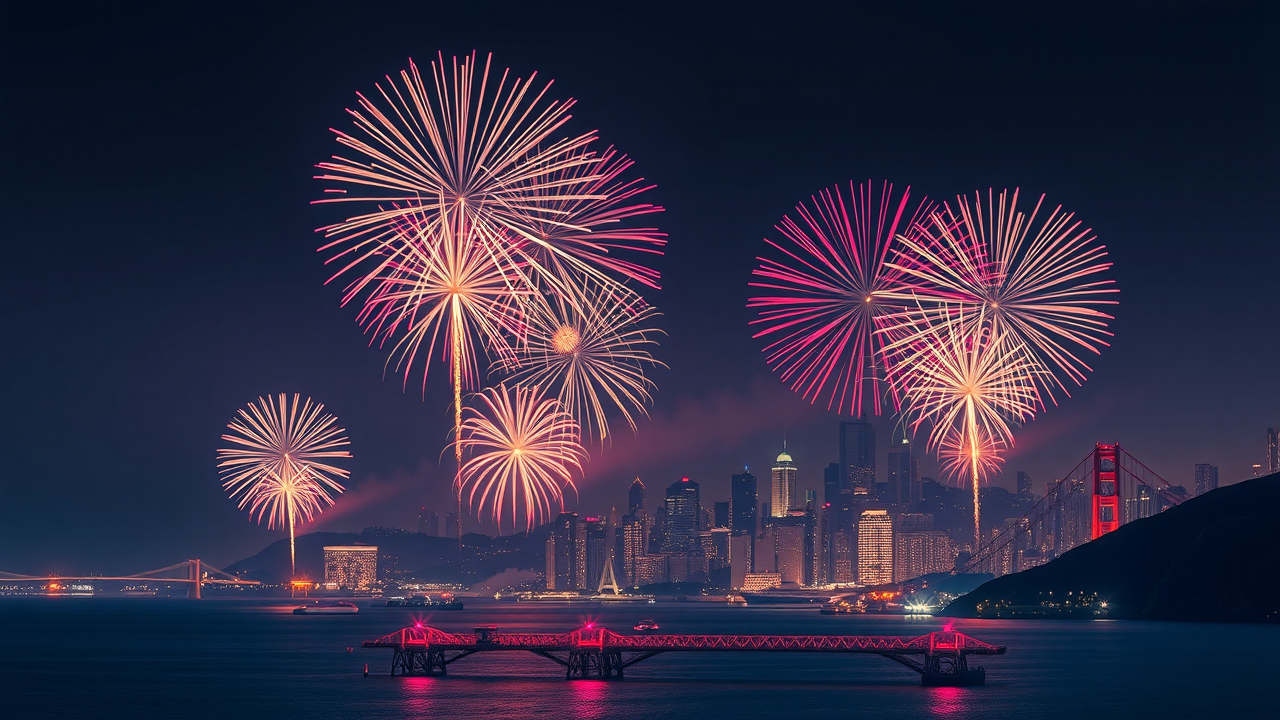
Ever Wondered How the Art and Science of Firework Displays Captivate Us?
The art and science of firework displays intertwines creative mastery with complex technical knowledge to transform the night sky into a living, breathing canvas. It’s not just about setting off loud explosions or creating colorful sparks—it is about combining precise chemical reactions and dazzling choreography to evoke pure emotion and communal wonder. Whether it’s Independence Day or New Year’s Eve, the best fireworks shows are meticulously planned and scientifically perfected, ensuring each burst of color, sound, and light leaves a lasting impression.
The fuse inside the shell is lit, sparking a chain reaction that is both scientific and artistic. Chemistry determines the vibrant colors , while creative vision shapes each fireworks display into a unique narrative. The excitement builds until the sky erupts, blending meticulous planning and spontaneous amazement—a harmony only found at the intersection of science and art.
Transforming Night Skies: The Fusion of Creative Vision and Chemistry
A breathtaking fireworks display isn’t simply a product of random explosions—it is the direct result of a carefully crafted partnership between artistic imagination and chemical ingenuity. The night sky becomes a stage where choreographers, designers, and pyrotechnic scientists collaborate to orchestrate an immersive sensory experience. Fireworks work by leveraging scientific principles: chemical compounds and metal salts create the desired visual effect, while advanced technology synchronizes every movement in harmony with music or narration, producing unforgettable moments of awe for audiences worldwide.
From the burst of a single star to the three-dimensional rings of color spiraling across the sky, each fireworks show is a delicate dance between physics and creativity—a true balance of art and science.
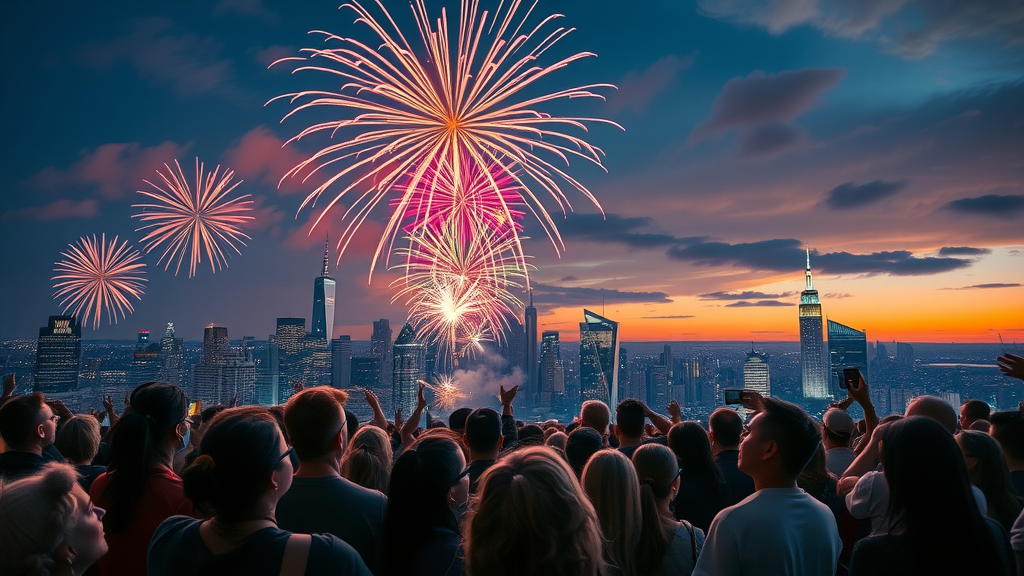
-
What You'll Gain By Understanding the Art and Science of Firework Displays:
-
Insights into the chemical processes that create vibrant colors
-
Appreciation for the artistic design of fireworks displays
-
Knowledge of the safety and technical elements involved
-
Inspiration from the interplay of creativity and science in public events
-
Defining the Art and Science of Firework Displays
At its core, the art and science of firework displays is about harnessing scientific expertise and creative flair to deliver awe-inspiring spectacles. The process begins with a vision—a theme, a story, or an emotion the audience should feel. This vision is then translated into shell designs, fuse types, and carefully chosen chemical compounds that will dictate color, shape, timing, and sound. Whether it’s a majestic Fourth of July celebration or a private event, every fireworks display merges the technical and the imaginative.
The science relies heavily on precision and safety. Pyrotechnic engineers use advanced calculations and digital firing systems to ensure every shell ignites at the right instant, allowing designers and composers to carefully choreograph an audio-visual journey. Meanwhile, the art lies in the vision—how do those sequences paint the sky, move the audience, and leave an indelible memory? Together, these aspects push the boundaries of what’s possible, ensuring each public event feels fresh and full of wonder.
What Makes a Fireworks Display a Masterpiece?
Not every pyrotechnic show ascends to greatness. A masterpiece in the art and science of firework displays seamlessly fuses timed ignition , sequencing , and artistic storytelling into a unified whole. Chefs of visual wonder—pyrotechnic designers—pour over storyboards, music choices, and audience perspectives to curate a symphony in light and sound. Through expertly balanced bursts and meticulously engineered firework shells , each explosion becomes a brushstroke, each sonic boom a rhythmic pulse, transforming the night sky into a truly memorable masterpiece.
The best displays are carefully crafted to engage all senses. The use of pioneering digital controls, knowledge of metal salts for vibrant colors , and the power of well-composed soundtracks ensure this artistry stays grounded in science, yet soars beyond the sum of its parts.
|
|
|
Elements Shaping Each Fireworks Masterpiece |
|
Elements |
Art |
Science |
|---|---|---|
|
Design |
Choreography, Theme, Audience Experience |
Timed Ignition, Sequencing |
|
Color |
Aesthetic Selection, Storytelling |
Chemical Compounds, Pyrotechnic Reactions |
|
Sound |
Emotional Impact, Rhythm |
Controlled Explosions, Pressure Dynamics |
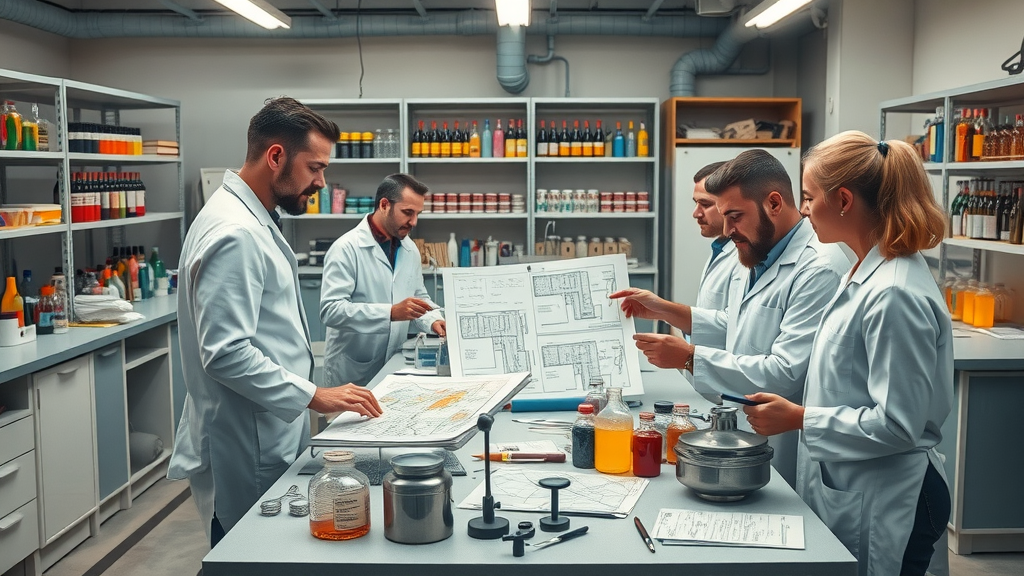
The Science Behind Firework Displays: An Explosive Chemistry
The mesmerizing effects seen in modern fireworks displays are impossible without the solid scientific groundwork behind them. The science behind fireworks begins the moment the fuse inside is lit: the energy contained in chemical compounds is unleashed, producing heat, light, color, and sound through rapid combustion. Engineers meticulously formulate each firework shell to ensure not only the right pyrotechnic reaction, but also absolute safety and reliability under strict safety protocols and standards.
The magic continues when the shell ignites at the perfect moment, sending burning stars and effect pellets into designed patterns. The blend of oxidizers and fuels , metal salts , and stabilizers pushes the boundaries of what’s visually possible, while intricate timing mechanisms guarantee that sequenced patterns and coordinated booms thrill crowds—all thanks to chemical ingenuity and technical expertise.
How Do Fireworks Work? Chemical Principles and Engineering
The secret to how fireworks work lies inside the shell . The explosive process involves more than simple ignition. Each firework is engineered as a miniature chemical lab, relying on components that serve precise functions—ignition, combustion, coloration, propulsion, and break. The bursts of color and cascading sparks are the results of thoughtfully layered chemical compounds , each contributing to a show that is as much science as spectacle.
Timing and synchronization rely on finely tuned technology. Digital firing systems and computer software orchestrate when each firework launches and explodes, combining the tried-and-true with the cutting-edge. The exact moment the fuse is lit , and the point at which the inside the shell ignites , are carefully coordinated for visual perfection and audience safety.
-
Oxidizers and Fuels
-
Binders and Stabilizers
-
Colorant Metals and Chemical Reactions
-
Shell and Effects Engineering
-
Timing and Synchronization
"Every firework is a carefully orchestrated scientific event blending chemistry and physics into a fleeting moment of amazement."
Color Creation: The Science of Vibrant Colors in Firework Displays
No element thrills as much as the vibrant colors that electrify the night sky during a fireworks show . The magic behind these colors lies in chemistry—specifically, in the use of specific metal salts that burn with bright, distinctive hues. As each pellet or “star” within a shell combusts, it emits a signature color: strontium for red, copper for blue, sodium for yellow, and so forth. The careful balancing of these elements means every shade can be meticulously predicted—and endlessly innovated.
Experts are always seeking brighter, longer-lasting, and even eco-friendlier colors. By tweaking chemical compounds and experimenting with new minerals, modern fireworks displays push the boundaries of what the human eye can perceive, keeping audiences mesmerized year after year.
How Chemicals Conjure Vibrant Colors in the Night Sky
When the bursting charge ignites inside the shell , a carefully chosen combination of metal salts vaporizes and emits light at characteristic wavelengths. For example, copper compounds yield blue, barium produces green, and strontium creates intense reds. By mixing and layering these compounds, pyrotechnicians can paint the night sky with a kaleidoscope of color—sparkling whites, lush greens, searing oranges, and deep blues. It’s an intricate synergy of chemistry and artistry that forms the visual heart of every remarkable fireworks display .
Safety and environmental consciousness increasingly influence the choices of chemicals. Engineers now develop biodegradable and less toxic colorants, ensuring that the beauty blazoned across the sky has minimal environmental impact.
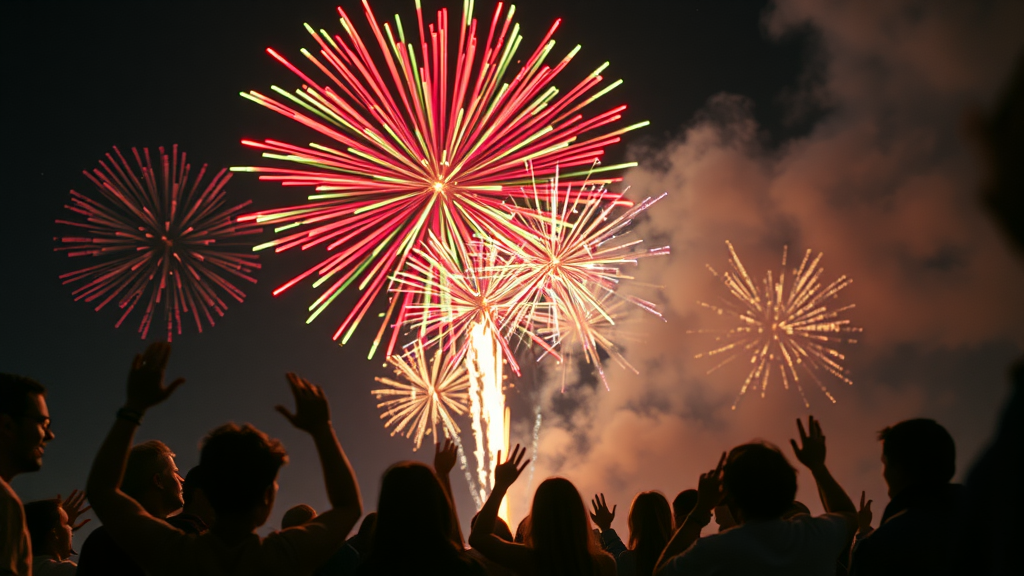
|
|
How Metal Salts Create Firework Colors |
|
Chemical Element |
Color Produced |
|---|---|
|
Strontium |
Red |
|
Barium |
Green |
|
Sodium |
Yellow |
|
Copper |
Blue |
|
Calcium |
Orange |
The Artful Design of Firework Displays: Choreography in the Sky
Great fireworks displays are not left to chance. Like a conductor leading an orchestra, show designers blend creativity and discipline to compose displays that move and delight. Show themes and storyboards are drafted, with music and narrative arcs plotted out. Visual patterns —from hearts and stars to dragon-shaped bursts—are chosen to delight the eye and symbolize deeper meanings. Every angle, from audience viewpoint to reflective surfaces (like a lake or river), is planned for maximum impact.
The artistry also comes in how displays use synchronization . Whether choreographed to a booming soundtrack or unfolding in dramatic silence, the interplay of timing, perspective, and color inspires collective awe, turning a simple park or city square into a once-in-a-lifetime memory.
Blending Creativity and Precision in Fireworks Display Design
What separates a firework from a fleeting burst and transforms it into an unforgettable display ? Creativity —the knack for designing patterns, motifs, and sequences that surprise and move. Yet, precision is just as important: technical expertise ensures that every bursting charge fires at exactly the right altitude, and every transition between shapes and colors smoothly lines up with the intended music or emotional tone.
Modern fireworks shows use digital technology to perfectly synchronize hundreds (or thousands) of shells, ensuring that intricate images or complex color fades are visible to every spectator. The deliberate blending of art and science makes each display feel custom-built—a performance just for you.
-
Elements of Artistic Design in the Art and Science of Firework Displays:
-
Show Theme and Storyboarding
-
Synchronization with Music
-
Visual Patterns and Motif Choices
-
Audience Perspective and Location
-
Safety and Technology: Modern Innovations in Fireworks Displays
The art and science of firework displays is continually evolving, driven by new technology and enhanced safety protocols . Today’s pyrotechnic productions use state-of-the-art computerized firing systems that control launch timing down to the microsecond, reducing human error and allowing for more complex, visually stunning sequences. Robust safety standards —including remote ignition and redundant controls—ensure that these high-energy events are safe for both audiences and professionals.
Increasingly, designers are also leveraging innovation for environmental responsibility: biodegradable shells , noise-reduction technologies, and non-toxic colorants are now the norm for eco-conscious public gatherings. This shift ensures that the awe-inspiring beauty of fireworks can be enjoyed by generations to come, while safeguarding our environment and communities.
How Advancements Elevate the Art and Science of Firework Displays
As digital tools and new materials emerge, the boundaries of what’s possible in fireworks displays are consistently pushed. New enhanced digital choreography allows complex three-dimensional effects, previously impossible by hand. Computerized firing systems enable designers to launch intricately layered bursts in tune with video projections, narrated stories, or interactive elements—directly enhancing audience immersion and emotional resonance.
The push for quieter, greener fireworks has also produced shells designed for minimal smoke, reduced sound, and rapid biodegradation. This emphasis on sustainable and responsible artistry reflects the continued evolution of the discipline—where tradition and future innovation walk hand in hand.
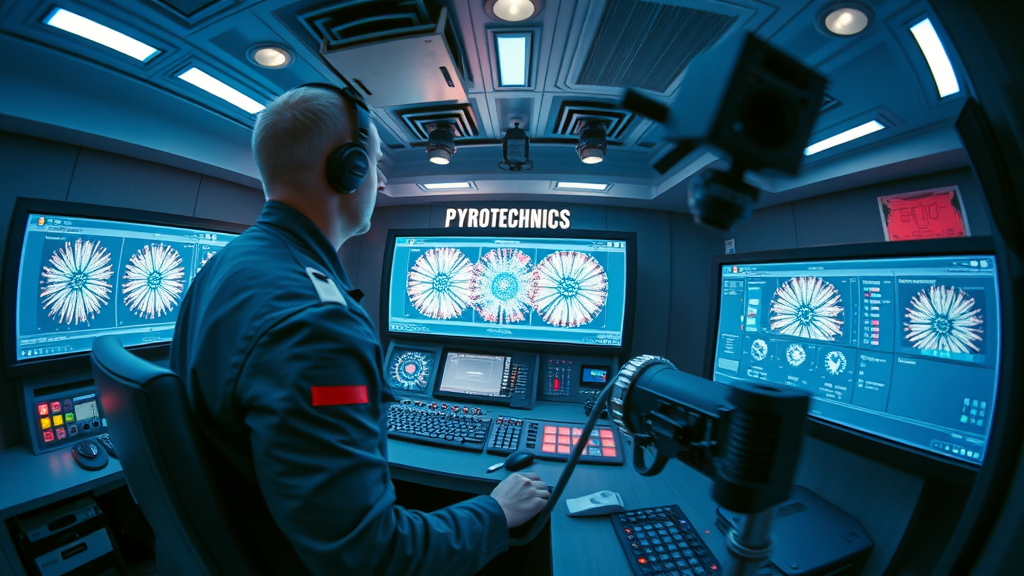
-
Computerized Firing Systems
-
Biodegradable and Eco-friendly Materials
-
Noise-Reduction Shells
-
Enhanced Digital Choreography
People Also Ask: What is the Science Behind Fireworks?
Answer: The science behind fireworks involves a combination of chemistry and engineering. Chemical compounds are carefully selected and layered in shells to produce different colors and effects. The explosive force is created by fuel and oxidizers, while precision timing allows for sequenced displays. This intricate synergy is at the core of the art and science of firework displays.
People Also Ask: What is the Art of Making and Displaying Fireworks?
Answer: The art of making and displaying fireworks covers the creative process from visual design to auditory experience. Designers combine themes, choreography, and timing to craft a narrative in the sky. Through synchronized launches, vibrant colors, and music, the art and science of firework displays transform technology into emotional impact.
People Also Ask: How is Creativity Applied to Fireworks?
Answer: Creativity in firework displays emerges through custom patterns, unexpected sequences, and color combinations. Designers experiment with new effects, synchronize with music, and use innovative technologies to surprise audiences. These creative choices exemplify the marriage of imagination and the art and science of firework displays.
People Also Ask: What is the Psychology Behind Fireworks?
Answer: The psychology behind fireworks lies in their power to evoke awe and joy. The multisensory experience—sight, sound, anticipation—triggers emotional responses and connects communities through shared moments. The art and science of firework displays are designed to maximize these positive feelings.
Timeline: The Historical Evolution of Firework Displays
The story of fireworks begins over a thousand years ago in ancient China, where Chinese alchemists discovered how black powder could light up festivals and celebrations. The allure quickly spread to Europe, where new uses and colors were introduced, marking the start of a long tradition of public displays. Fast-forward to today, and modern fireworks feature eco-friendly materials, digital synchronization, and boundary-pushing artistry. Each era reflects a leap forward in both the art and science of firework displays—ever more complex, safe, and emotionally impactful.
This timeline highlights the pivotal milestones that shaped fireworks from mystical rituals to globally celebrated art forms, blending technical innovation with enduring wonder.
From Ancient China to Modern Art and Science
|
|
Historic Evolution of Firework Displays |
|
Era |
Notable Development |
|---|---|
|
9th Century |
Invention of Black Powder in China |
|
14th Century |
Introduction to Europe, Early Celebratory Uses |
|
19th Century |
Industrial Innovations, Colored Fireworks |
|
21st Century |
Computerized Choreography, Eco-friendly Advances |
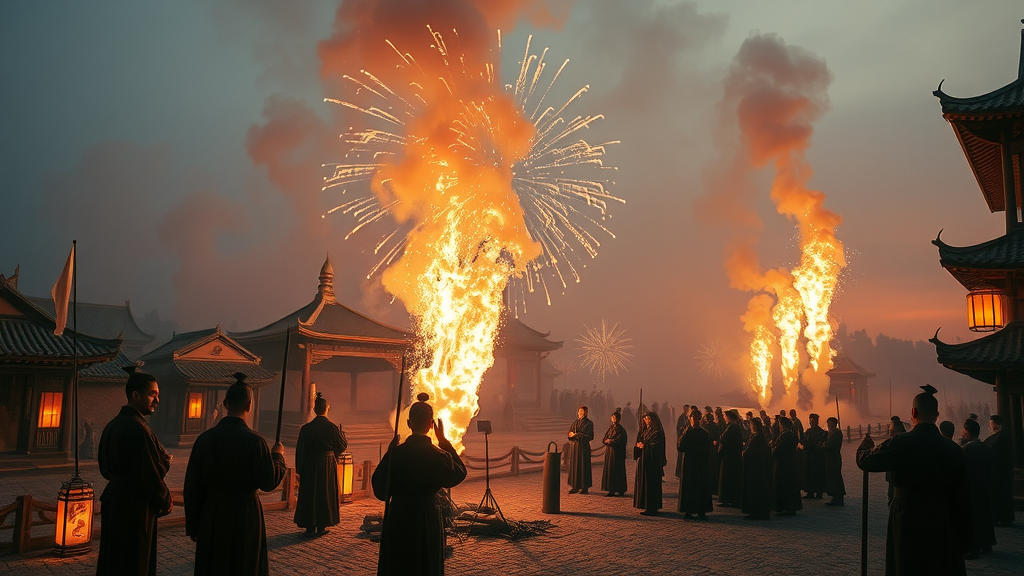
Inspiration Behind the Art and Science of Firework Displays
Fireworks have long inspired poets, artists, and innovators to capture their transient beauty and ultimate balance of art and science. From the mysticism of ancient ceremonies to the thrill of sophisticated modern fireworks shows, pyrotechnics continue to fascinate generations. Their inspiration can be felt in the famous words of those who have dedicated their lives to making the night sky into a canvas of light and hope.
Pyrotechnicians, both past and present, see each display as more than entertainment—it’s a fleeting masterpiece, a moment of shared wonder crafted with heart and scientific mastery. Their passion is evident in their words and their work, inspiring future artists and scientists alike to push the boundaries of what’s possible in the night sky.
Famous Quotes and Perspectives in the Fireworks World
"A good fireworks display is both a painting and a symphony—crafted by science, performed with heart."
Expert Tips: Organizing Your Own Firework Display
Dreaming of creating your own magical fireworks display ? It takes more than a few well-placed shells and a lighter! To deliver an unforgettable display that wows your audience, you must skillfully unite art and science . Focus on a creative theme, invest in quality fireworks, and leverage reliable technology that guarantees perfect synchronization. Strict adherence to safety standards and permitting ensures everyone enjoys the show free from harm.
Remember: The most visually stunning and memorable displays combine daring creativity with meticulous planning, all underpinned by deep technical expertise in both chemistry and pyrotechnic engineering. Let inspiration drive the design, but let science keep it safe and spectacular.
Practical Advice Fusing Art and Science for Unforgettable Fireworks
Use this checklist to harness the full art and science of firework displays for your next celebration, whether it’s Fourth of July, New Year’s Eve, or a private festival:
-
Secure the necessary permits and ensure safety regulations
-
Design a unique show theme
-
Select quality fireworks for desired effects
-
Use reliable technology for timing and coordination
-
Create a synchronized soundtrack for enhanced experience
Exploring Vibrant Colors: Chemistry and Innovation in Modern Fireworks
As we look to the future, advances in modern fireworks chemistry are leading to bolder, longer-lasting, and safer vibrant colors . Innovations include the use of more environmentally friendly formulas and techniques that lower emissions and noise while introducing new shades and effects never seen before. Whether for public festivals or private events, these upgraded shells bring fresh excitement—and a clean conscience—to each celebration.
With every leap in technology, displays can now be tailored for any setting, theme, or cause. Pyrotechnicians use biodegradable materials, digital sequencing, and interactive features to push the boundaries of both artistic design and ecological stewardship.
How Modern Displays Push the Boundaries of Art and Science
Today’s best displays fuse tradition and innovation. By adopting new digital tools, designers craft highly personal, responsive experiences—choreographing bursts in tune with live music or even audience participation through apps. Custom color formulas and quieter bursts make celebrations accessible for all, proving that the art and science of firework displays is constantly evolving to delight and unite communities in fresh, sustainable ways.
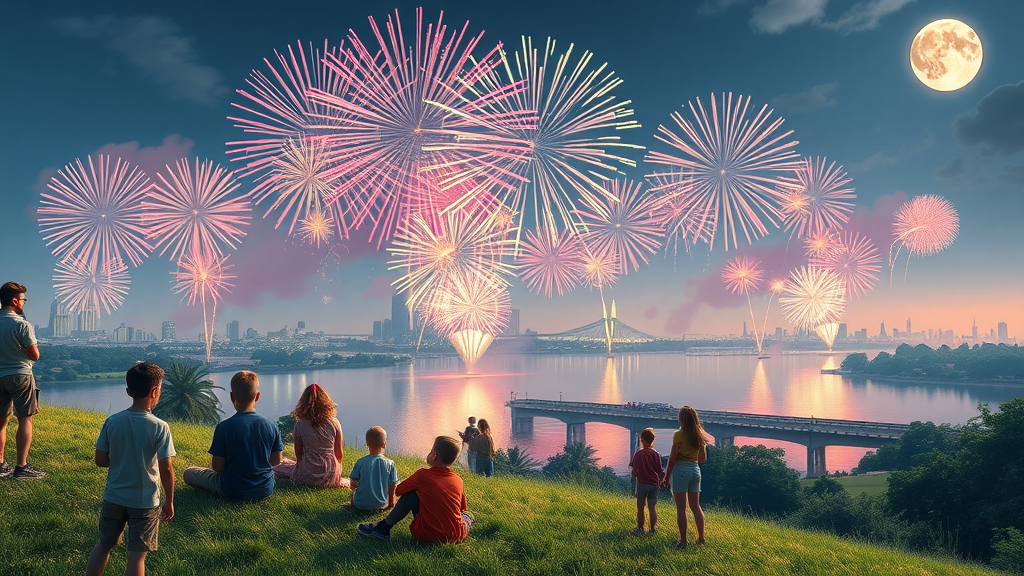
Lessons from the Best: Iconic International Firework Displays
Some fireworks shows are so iconic, they set the standard for creativity, technical expertise, and emotional power. From Sydney’s New Year’s Eve extravaganza to the legendary Montreal International Fireworks Competition, each case study demonstrates how world-class teams blend comprehensive planning, artistic audacity, and scientific rigor to elevate their spectacles to unforgettable heights. These events delight millions, inspire countless imitators, and affirm the enduring universal appeal of fireworks displays .
Studying these highlights reveals not just the latest trends, but also the eternal principles of balance, innovation, and storytelling found at the core of every show-stopping pyrotechnic moment.
Case Studies: Where Art and Science Meet for Unforgettable Experiences
By exploring just how leading fireworks teams carefully choreograph each display, selecting shells for precise effects and synchronizing perfectly with music and projections, aspiring designers can gain deeper insight into what makes a memorable event.
Frequently Asked Questions on the Art and Science of Firework Displays
-
Can anyone become a fireworks designer? Becoming a fireworks designer requires training in both chemistry and creative design. Most professionals undergo certification and hands-on apprenticeships before taking the lead on public displays. Passion for both science and the arts is key!
-
What are common safety mistakes in firework displays? Common mistakes include improper storage of pyrotechnics, poor site planning, and neglecting robust firing systems. Strict adherence to modern safety standards and permitting keeps audiences and workers safe.
-
How are large-scale displays synchronized? Larger displays rely on sophisticated digital firing systems that allow designers to control every launch and explosion precisely—often with meticulous programming linked to music, video, or narration for seamless, stunning results.
-
Are there eco-friendly fireworks? Yes! Many modern displays use eco-friendly shells made from biodegradable materials and non-toxic colorants, and some employ sound-reducing technologies for both audience comfort and wildlife protection.
Key Insights: Why the Art and Science of Firework Displays Continue to Mesmerize
The timeless charm of fireworks lies in their perfect union of art and science . Each new advancement—be it in chemistry, choreography, or technology—renews the wonder captured in every fireworks display . As displays continue to delight with vibrant colors , emotional impact, and environmental responsibility, the magic shows no signs of fading.
Enduring Appeal of Fireworks: Blending Innovation with Timeless Wonder
Whether for historic celebrations or future-facing festivals, the night sky will always be transformed into a spectacular canvas—reminding us that curiosity, creativity, and a sense of community are at the heart of every well-orchestrated burst of light, color, and sound.
Ready to Experience the Art and Science of Firework Displays?
Your Next Steps to Discovering and Enjoying Fireworks Like Never Before
Embrace the wonder firsthand—seek out community events, support innovative displays, and share the awe with friends and family. Explore, learn, and be inspired as the art and science of firework displays continue to illuminate our skies and imaginations.
To deepen your understanding of the art and science behind firework displays, consider exploring the following resources:
-
“Fireworks Forever: The Story and Engineering of Fireworks” : This article from the USC Viterbi School of Engineering delves into the intricate engineering and chemistry that create the vibrant colors and shapes in fireworks. ( illumin.usc.edu )
-
“The Art of Firework Synchronisation” : Published by Epic Fireworks, this piece examines the meticulous planning and technological advancements involved in synchronizing fireworks to music, enhancing the overall spectacle. ( epicfireworks.com )
These resources offer valuable insights into the fusion of creativity and technical precision that make firework displays so mesmerizing.
 Add Row
Add Row  Add
Add 

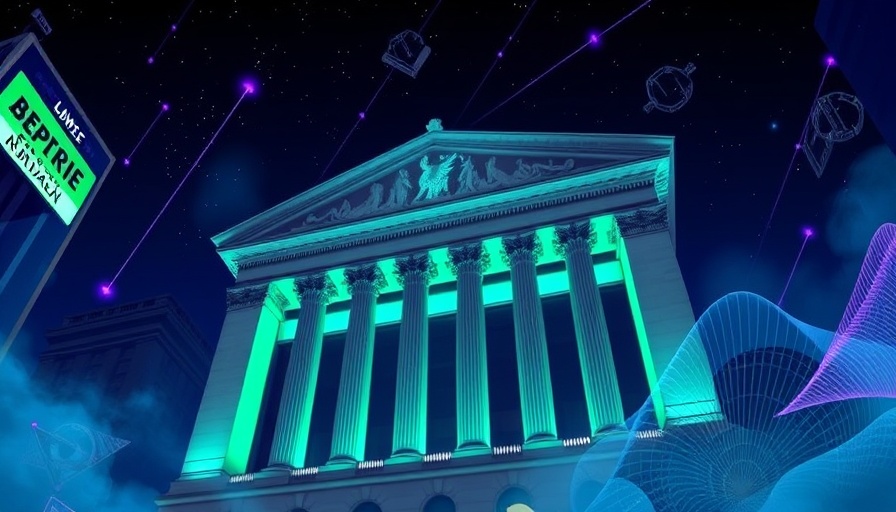


 Add Row
Add Row  Add
Add 
Write A Comment